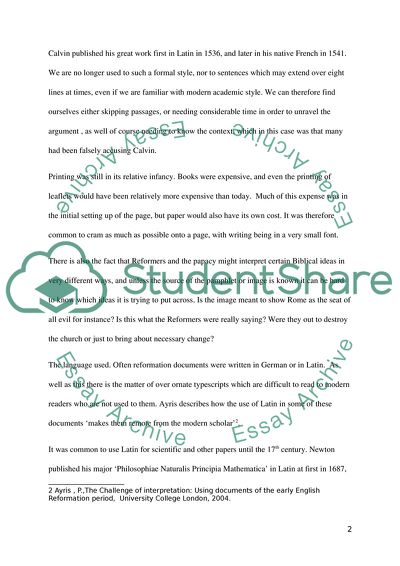Cite this document
(“What are some of the problems of interpretation that face historians Essay”, n.d.)
What are some of the problems of interpretation that face historians Essay. Retrieved from https://studentshare.org/history/1630435-what-are-some-of-the-problems-of-interpretation-that-face-historians-who-wish-to-use-visual-sources-like-that-of-woodcuts-and-illustrations-on-pamphlets-etc-at-the-time-of-the-reformation
What are some of the problems of interpretation that face historians Essay. Retrieved from https://studentshare.org/history/1630435-what-are-some-of-the-problems-of-interpretation-that-face-historians-who-wish-to-use-visual-sources-like-that-of-woodcuts-and-illustrations-on-pamphlets-etc-at-the-time-of-the-reformation
(What Are Some of the Problems of Interpretation That Face Historians Essay)
What Are Some of the Problems of Interpretation That Face Historians Essay. https://studentshare.org/history/1630435-what-are-some-of-the-problems-of-interpretation-that-face-historians-who-wish-to-use-visual-sources-like-that-of-woodcuts-and-illustrations-on-pamphlets-etc-at-the-time-of-the-reformation.
What Are Some of the Problems of Interpretation That Face Historians Essay. https://studentshare.org/history/1630435-what-are-some-of-the-problems-of-interpretation-that-face-historians-who-wish-to-use-visual-sources-like-that-of-woodcuts-and-illustrations-on-pamphlets-etc-at-the-time-of-the-reformation.
“What Are Some of the Problems of Interpretation That Face Historians Essay”, n.d. https://studentshare.org/history/1630435-what-are-some-of-the-problems-of-interpretation-that-face-historians-who-wish-to-use-visual-sources-like-that-of-woodcuts-and-illustrations-on-pamphlets-etc-at-the-time-of-the-reformation.


